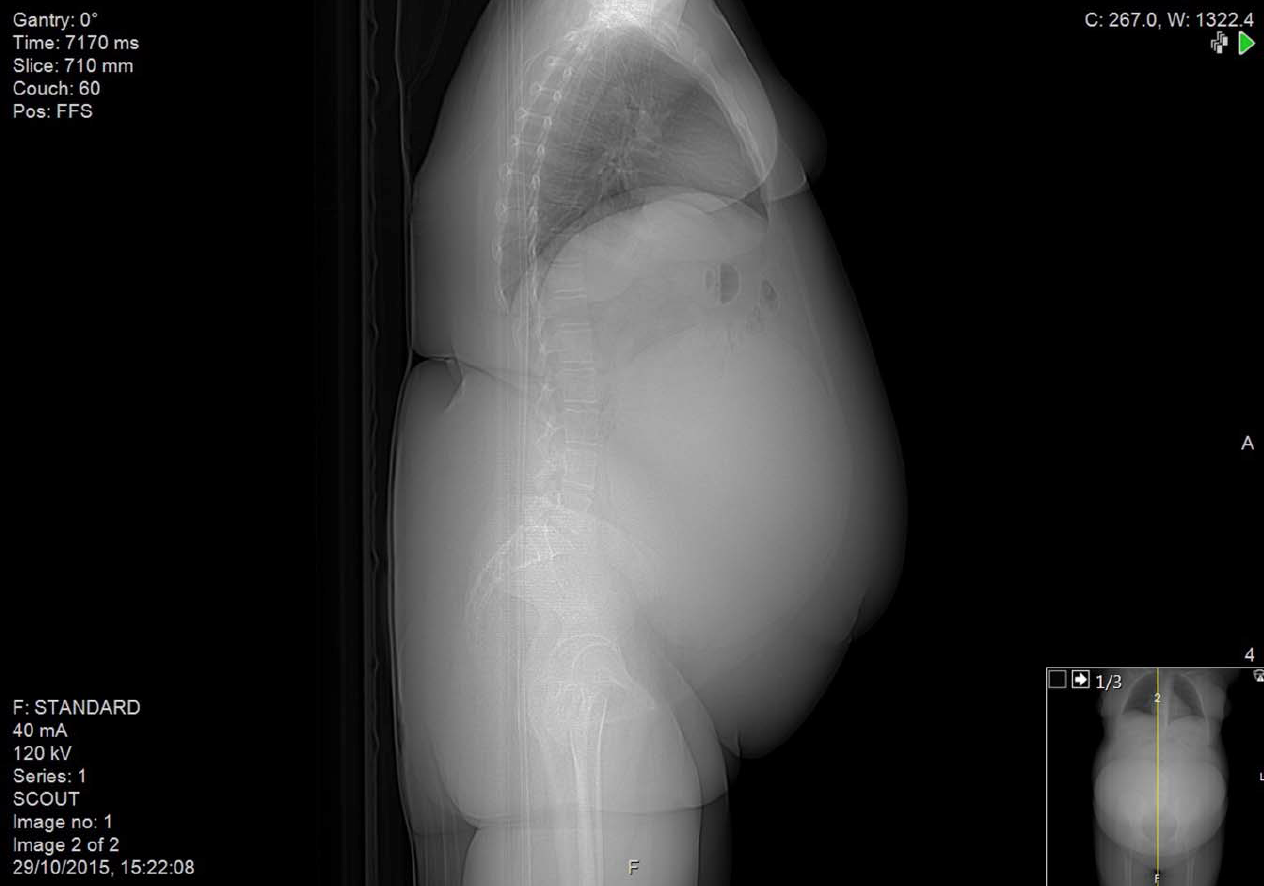How a Basketball-Size Cyst Eluded Doctors

A young woman in England who repeatedly went to see her doctor because she was having pain and a feeling of fullness in her abdomen was told that her symptoms were due to her obesity. However, she later learned that the real reason for her symptoms was a large ovarian cyst, a new case report reveals.
The problem was finally found when, at one of her doctor's appointments, the 22-year-old woman was advised to go to the hospital emergency room to find out if the pain in her left side might be caused by a kidney stone. At the hospital, the woman had an ultrasound exam, and the images showed that she had a very large cyst on her ovary, according to the case report, published online (Jan. 28) in the journal BMJ Case Reports.
All it took was a simple ultrasound scan to show that there was something wrong with this patient, said Dr. Partha Ray, a physician at James Paget University Hospital in Gorleston-on-Sea, England, and a co-author of the case report.
If the woman were not obese, it would probably have been more obvious that there was a medical problem that was causing the distention of her abdomen, said Ray, who helped oversee the woman's care in the hospital. [16 Oddest Medical Cases]
"The obesity simply hid her giant cyst," Ray told Live Science. The cyst was about the size of a basketball and filled the woman's abdominal cavity, he said.
An ovarian cyst is a fluid-filled sac that forms on or within a woman's ovary, and it is common for women to have one or several of them during their childbearing years, according to the American College of Obstetricians and Gynecologists (ACOG). Small cysts typically don't cause any symptoms, but larger ones may cause a dull or sharp ache in the lower abdomen as well as swelling and bloating, ACOG said.
However, abdominal swelling and bloating can be trickier to detect in a person who is significantly overweight. What's more, being obese can increase a woman's risk of ovarian cysts, although their exact cause is unknown, the researchers said.
Get the world’s most fascinating discoveries delivered straight to your inbox.
Detecting a cyst
Some ovarian cysts may be cancerous. In this woman's case, her medical history showed that she previously had a pulmonary embolism, a blockage in one of the lung's main arteries.
A pulmonary embolism is a rare condition in someone so young, and this put her cyst at greater risk for malignancy, Ray said. So, the doctors conducted a CT scan to investigate this further, he added.
Fortunately, the CT scan found no evidence of cancer in the ovarian cyst. Surgeons were able to remove the cyst along with the woman's left ovary.
It's not that unusual for patients to see their family doctors repeatedly with the same unresolved health problem, as occurred in this case, Ray said. This woman made frequent visits for abdominal pain, but she was turned away and told it was due to her obesity.
However, it's important for doctors to consider that something else might be going on medically in these patients, he said.
"Repeated, unresolved visits to a general practitioner or family doctor should warrant a visit to a specialist or a second opinion for further investigation," especially in a person with a significant past medical history, as this woman had, Ray said.
Follow Live Science @livescience, Facebook & Google+. Originally published on Live Science.
Cari Nierenberg has been writing about health and wellness topics for online news outlets and print publications for more than two decades. Her work has been published by Live Science, The Washington Post, WebMD, Scientific American, among others. She has a Bachelor of Science degree in nutrition from Cornell University and a Master of Science degree in Nutrition and Communication from Boston University.


